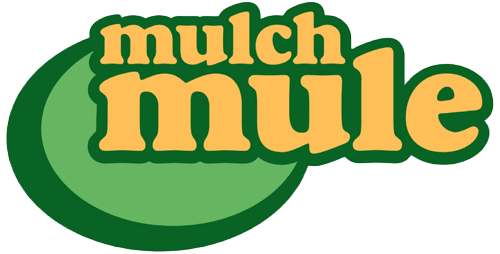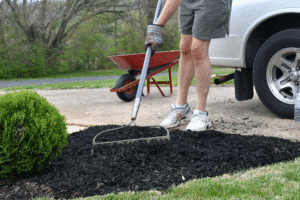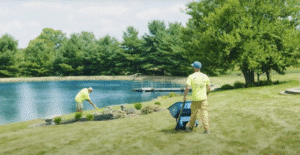In today’s fast-paced and competitive landscaping industry, every owner and contractor seeks new ways to increase profitability while maintaining high-quality services. From reducing labor expenses to embracing innovative technology, a well-rounded approach can elevate your bottom line and strengthen your business reputation. Whether you run a small local operation or manage multiple crews, optimizing your resources is the key to consistent growth and a solid market presence.
This article presents seven powerful strategies specifically aimed at boosting landscaping business profits. Along the way, you’ll see how leveraging advanced solutions—like those offered by Mulch Mule—can streamline operations, maximize labor efficiency, and help you get more out of every project. Read on to discover detailed, actionable insights designed to ensure sustainable expansion in an evolving marketplace.
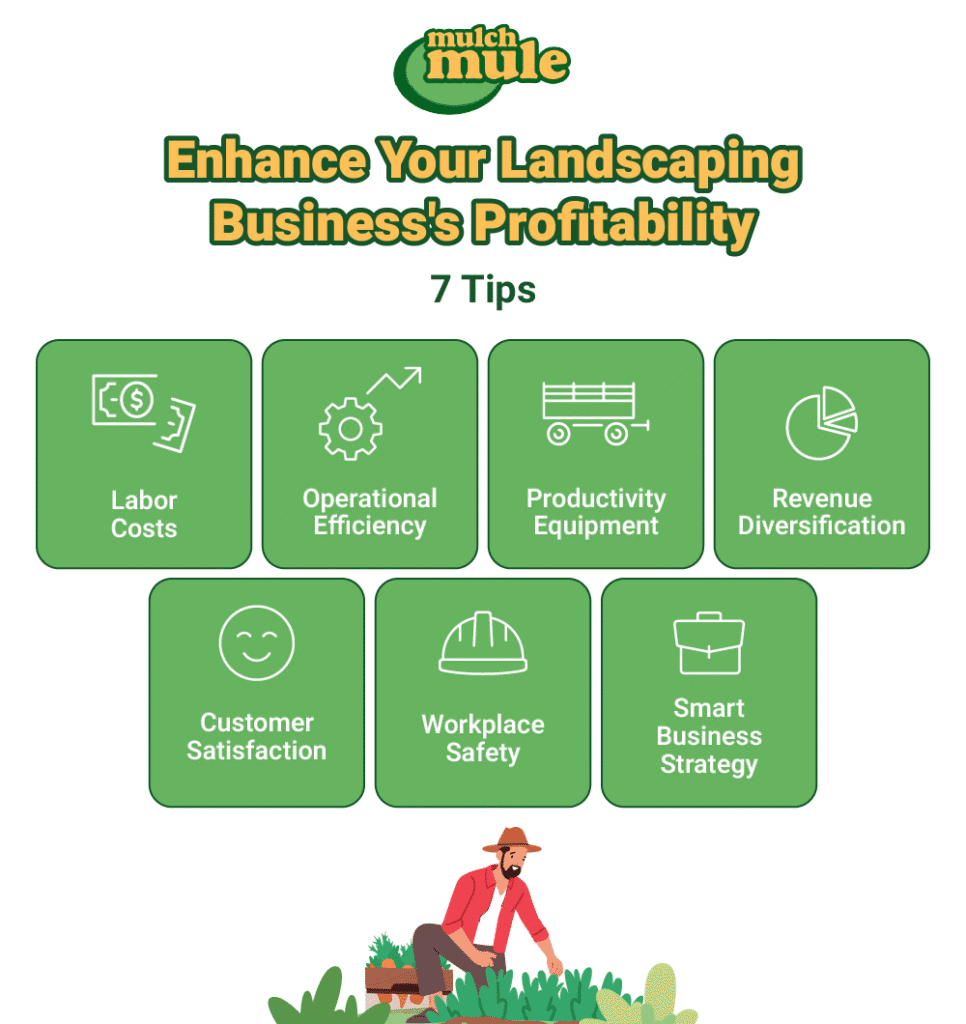
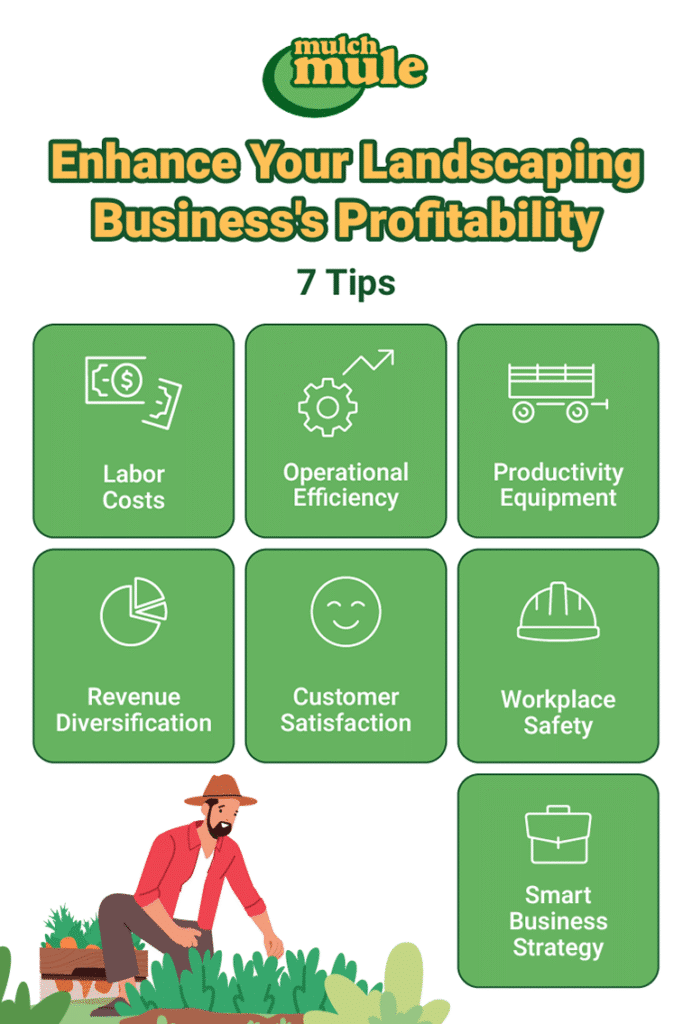
1. Focus on Reducing Labor Costs
Labor costs often represent the largest ongoing expense in a landscaping business. How can you reduce these costs without compromising service quality or client satisfaction? A targeted approach that combines people management with equipment upgrades can make a significant difference in your yearly expenses.
Automate Material Handling:
One of the most effective ways to decrease labor expenses is by automating repetitive tasks. Many landscaping businesses still rely on manual loading and unloading of materials, a time-consuming process that significantly drives up costs.
Adopting specialized equipment, such as the Mulch Mule through an authorized dealer, can save hours of labor each day by speeding up loading, transporting, and unloading tasks. This automation allows you to reassign employees to higher-value tasks, ultimately reducing the total labor bill.
Strategically Schedule Your Workforce:
Understanding the seasonal and weekly ebbs and flows of landscaping demand is crucial. Analyze your project calendar, identify peak workloads, and utilize part-time or seasonal staff to align labor more closely with actual needs. By providing flexibility in hiring, you can prevent paying for idle hours during slow periods.
Offer Comprehensive Training and Upskilling:
Investing in your team’s expertise can pay dividends. Teaching employees efficient handling techniques or safe operation of specialized equipment ensures tasks are completed quickly and correctly. Skilled workers also tend to have higher job satisfaction, leading to lower turnover and improved overall efficiency. Training might require an upfront investment, but the time saved and consistent quality often justify the cost.
Potential Drawbacks to Consider:
When introducing automation, be mindful of potential training time and the upfront investment in new equipment. Set realistic transition periods and budgets to avoid unexpected strain on your finances.
By cutting down wasted labor hours and making better use of your workforce, you create a sustainable model that supports higher profits in both peak and off-peak seasons.
2. Optimize Operational Efficiency and Build a Skilled Team
Optimizing day-to-day operations can help you stand out in a crowded landscaping market. While reducing labor costs is a key step, enhancing team cohesion and communication often multiplies the benefits and leads to a more streamlined workflow.
Implement Project Management Tools:
Move beyond pen-and-paper approaches. Cloud-based platforms let you schedule tasks, track resources, and monitor job progress in real time. By having a centralized dashboard, you can quickly respond to scheduling conflicts or material shortages. This consistent oversight keeps projects on track and helps prevent work delays.
Leverage Efficient Equipment:
Outdated or poorly maintained tools can slow projects and frustrate workers. Prioritize upgrades, such as hoppers with automated unloading, that simplify the most physically taxing aspects of any project. For example, modern trailers and specialized attachments help discharge materials quickly, cutting down idle time and allowing workers to focus on detailed landscaping tasks.
Emphasize Clear Communication:
Encourage employees to flag potential problems or material needs well ahead of deadlines. Utilize real-time messaging apps so teams in the field can stay in sync with office staff and suppliers. Transparent communication fosters an environment where small issues are addressed promptly, preventing larger setbacks.
Invest in Development and Leadership:
Skilled leaders can transform good teams into great ones. Offer regular workshops to improve technical know-how and soft skills. Encourage experienced crew members to mentor newer employees. This culture of growth not only ensures consistency but also boosts morale, ultimately leading to faster project turnaround times.
Potential Drawbacks to Consider:
While the benefits of streamlined operations are vast, it can take time and money to implement new management systems or train your team. Be prepared for a short adjustment period—especially when adopting unfamiliar tools or software.
By focusing on efficiency from the top down, you create a business that adapts quickly to changing workloads, remains productive even in peak seasons, and keeps labor utilization at an optimal level.
3. Invest in Equipment That Boosts Productivity
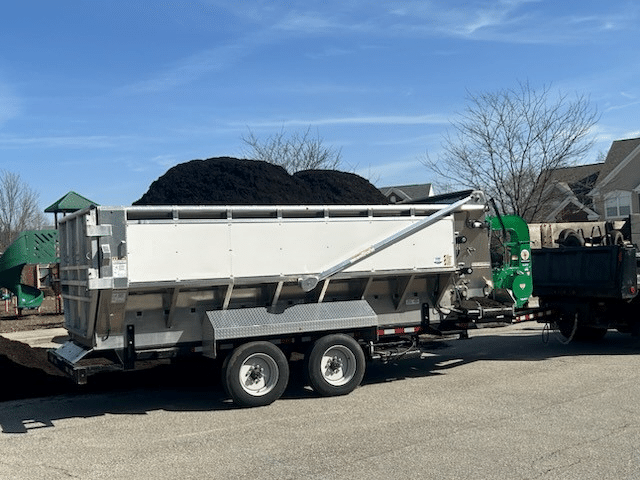
The right equipment can elevate a landscaping company from average to highly competitive. Whether it’s heavy-duty trailers, efficient attachments, or high-capacity mowers, strategic equipment investments can lead to shorter completion times, happier customers, and higher profit margins.
Modern Trailers and Hoppers:
Automating tasks like loading, unloading, and spreading landscaping materials significantly reduces time spent on manual labor. The high-capacity trailer from Mulch Mule, for example, streamlines the handling of mulch, soil, compost, and other bulk materials, contributing to overall productivity. By finishing jobs faster, you can schedule more clients and boost revenues.
Attachments & Upgrades:
Not every business can afford multiple machines for different tasks. That’s where modular attachments and upgrades come in. Versatile accessories let a single piece of equipment handle multiple functions, from material blowing to debris sweeping—maximizing its utility year-round.
Perform Rigorous Cost-Benefit Analyses:
When evaluating new equipment, don’t focus solely on the upfront cost. Consider how much labor time it can save and the potential boost in productivity per job. In many cases, the efficiency and cost savings offered by advanced machinery can pay for the initial investment relatively quickly—especially in high-demand situations.
Potential Drawbacks to Consider:
Upgrading equipment usually calls for an upfront investment, which can strain smaller businesses. Consider short-term rentals or financing if an outright purchase isn’t feasible. Additionally, allow time for employees to learn new controls or safety procedures during the transition.
Choosing the right equipment helps you reclaim time, reduce manual labor, and distinguish yourself as a landscaping provider capable of handling complex projects with enhanced speed and precision.
4. Diversify Revenue Streams
Relying on a single service or a narrow set of offerings can make your landscaping business vulnerable to market shifts and seasonal slowdowns. Diversification not only cushions you against these disruptions but also allows you to capture a broader set of clients with varying needs.
Complementary Services:
Many landscaping companies add snow removal, tree trimming, or garden design to their portfolio. Offering year-round solutions keeps your workforce productive through different seasons and helps maintain a stable cash flow even when traditional landscaping jobs slow down.
Use Versatile Equipment:
Machines designed to handle multiple functions—such as mulch spreading, gravel loading, and debris clearing—expand your project capabilities. This adaptability is particularly valuable in regions with varied climates and project types throughout the year.
Tiered Service Bundles:
By creating basic, enhanced, and premium packages, you can appeal to both budget-conscious clients and those seeking all-inclusive services. These tiers might include varying levels of maintenance, seasonal checkups, or specialized care—opening avenues for upselling while meeting diverse customer demands.
Strategic Collaborations:
Partner with a reliable dealership and complementary service providers, such as irrigation specialists or hardscape installers. Cross-referrals and bundled services can expose your company to a new client base while sharing marketing costs between partners.
Potential Drawbacks to Consider:
Expanding service offerings may require additional training, new equipment, or adjustments to schedules. Evaluate if your current resources can support the additional workload before diversifying too broadly.
By diversifying effectively, you mitigate revenue fluctuations and create multiple opportunities for growth, ensuring a more resilient and profitable business model.
5. Enhance Customer Satisfaction to Secure Repeat Business
A satisfied customer isn’t just a one-time revenue source—they often become a long-term client and a brand ambassador who endorses your services to friends and neighbors. Strengthening relationships with existing clients can be far more cost-effective than acquiring new customers.
Personalize Your Approach:
Tailor landscape designs and maintenance schedules to align with your clients’ unique tastes and needs. Whether focusing on eco-friendly materials or creative outdoor lighting solutions, personalization sets you apart in a market where many services might feel generic.
Leverage Efficient Tools for On-Time Delivery:
Timely project completion is key to fostering trust. Using modern equipment to minimize delays can help ensure that projects are finished on schedule, keeping clients satisfied and more likely to return.
Proactive and Transparent Communication:
Keep clients updated on schedules, any unforeseen changes, or minor adjustments in project scope. Regular communication helps manage expectations and prevents misunderstandings that can lead to dissatisfaction.
Collect and Share Testimonials:
Encourage satisfied clients to share their positive experiences through testimonials. Showcasing success stories builds credibility and reinforces your commitment to high-quality service.
Potential Drawbacks to Consider:
Providing highly personalized service or frequent updates may require additional effort from your team. Balancing customization with operational efficiency is essential to maintain profitability while ensuring customer delight.
By prioritizing strong customer relationships, you stabilize income, improve retention, and build a reputation that naturally attracts new business.
6. Prioritize Workplace Safety to Avoid Costly Setbacks

Workplace safety is a critical factor in maintaining productivity and avoiding disruptions that can lead to significant financial losses. Accidents not only result in project delays but can also increase workers’ compensation premiums and lead to legal issues.
Comprehensive Training Programs:
Equip employees with proper training on operating equipment, handling materials safely, and identifying potential hazards.
Modern, Worker-Friendly Equipment:
Invest in ergonomically designed machinery that minimizes strain and reduces the risk of injury. Advanced features in new equipment can often handle heavy tasks that would otherwise pose safety risks if done manually.
Routine Maintenance Checks:
Regularly inspect and service equipment to prevent breakdowns or malfunction-related injuries. Preventative maintenance not only safeguards employees but also prolongs the lifespan of your inventory.
Foster a Culture of Safety:
Encourage workers to report near-misses and safety concerns. An environment where employees feel empowered to speak up helps catch small issues before they become major problems.
Potential Drawbacks to Consider:
Implementing robust safety protocols and regularly scheduled maintenance may increase administrative tasks and operational costs. However, these expenses are outweighed by the benefits of a safer work environment and minimized downtime.
Creating a safe work environment not only protects your team but also builds trust with clients, further solidifying your reputation as a reliable service provider.
7. Leverage Smart Financing, Promotions, and Digital Marketing
Expanding your landscaping business often requires strategic investments—new equipment, updated technology, and effective marketing campaigns. Balancing growth with responsible cash flow management is key to long-term profitability.
Explore Flexible Financing:
Modern financing solutions can help spread out the cost of new equipment, tools, or technology upgrades over manageable installments. This approach allows you to upscale operations without significant expenditure upfront.
Keep an Eye on Promotions and Seasonal Deals:
Special offers and promotions can help lower the acquisition costs of high-quality equipment. These timely deals often coincide with peak landscaping seasons, enabling you to deploy advanced gear when demand is highest.
Embrace Digital Channels:
Research and industry insights suggest that businesses with robust online presences tend to generate more leads. Showcasing completed projects on social media, publishing informative blog posts, and showcasing helpful videos are all effective strategies for increasing brand visibility and attracting prospects.
Expand Your Community Reach:
Participate in local events, join chambers of commerce, or enroll in ambassador programs. These initiatives help build local credibility and foster networks that can lead to additional referrals and business opportunities.
Potential Drawbacks to Consider:
Financing options may carry interest or fees, and digital marketing requires ongoing engagement to maintain momentum. Ensure you balance these expenses with the anticipated returns to avoid overextending your budget.
By integrating smart financing, targeted promotions, and dynamic digital marketing, you can underline your business’s strengths, attract more clients, and support sustainable growth without undue financial strain.
Cultivate Growth with Proven Profit Strategies
Boosting landscaping business profits isn’t about one revolutionary tactic—it’s about consistently applying a series of strategic initiatives. Whether it’s reducing labor costs, optimizing operations, investing in productivity-enhancing equipment, diversifying revenue streams, or nurturing customer relationships, every step you take brings your business closer to a stronger bottom line and a stellar reputation.
Implementing these seven strategies with practical, data-driven insights can transform how you run your landscaping operations. Ready to reap the benefits of modern solutions? Explore how the Mulch Mule Trailer can support your complex landscaping projects for the long haul. Contact us today to discover how innovative offerings can help you seize year-round growth opportunities, reduce labor costs, and maximize profitability.
